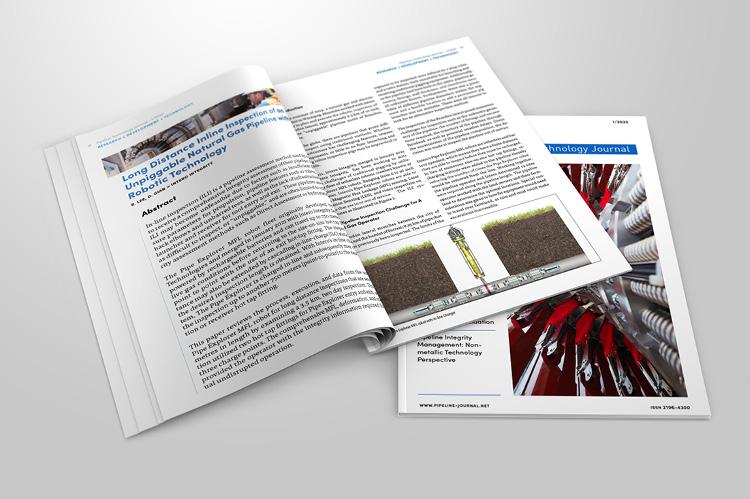Long Distance Inline Inspection of an Unpiggable Natural Gas Pipeline with Robotic Technology

In-line inspection (ILI) is a pipeline assessment method used by operators to receive a comprehensive integrity assessment of their pipeline. However, ILI may become unfeasible due to factors such as insufficient flow/pressure parameters for propulsion, pipeline features such as valves, back-toback elbows and unbarred tees, as well as the lack of infrastructure such as launcher and receiver for tool entry and exit. These pipelines are deemed as difficult to inspect, or “unpiggable,” and are often limited to other integrity assessment methods such as Direct Assessment or hydrostatic testing.
The Pipe Explorer MFL robot fleet originally developed by Pipetel Technologies and merged in January 2021 with Intero Integrity Services, is powered by rechargeable batteries and can travel up to 750 meters under live gas conditions before returning to the size-on-size hot-tap fitting or point to point with the use of an exit hot-tap fitting. The inspection distance may also be extended by cascading in-line-charge (ILC) stations until the desired inspection length is obtained. With Intero’s in-line charge system, The Pipe Explorer is charged in-line and subsequently may continue the inspection up to another 750 meters (point-to-point) to the next ILC station or receiver hot tap fitting.
This paper reviews the process, execution, and data from the use of The Pipe Explorer MFL robot for long distance inspections that are several kilometres in length by examining a 3.5 km, two day inspection. This inspection utilized two hot tap fittings for Pipe Explorer entry and exit, as well as three charge points. The comprehensive MFL, deformation, and video data provided the operator with the integrity information required for continual undisrupted operation.

